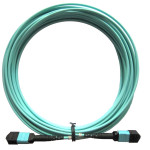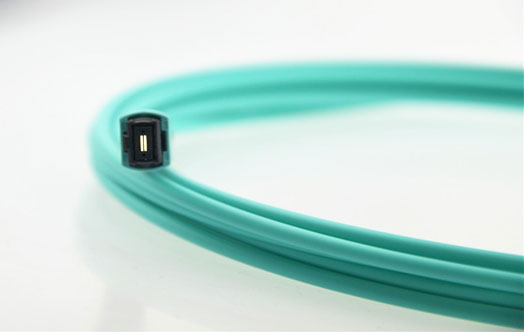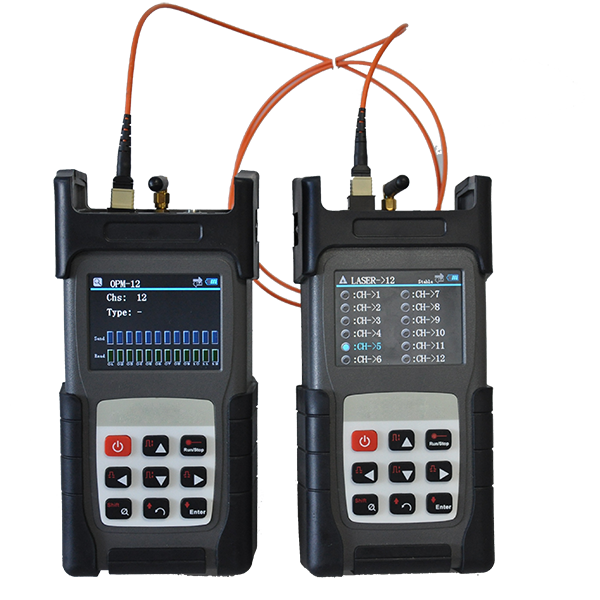The connectors and adapters are coded throughout to ensure the correct orientation of the plug connection. The three polarity methods A, B and C as defined in TIA-568-C, for their part, are used to guarantee the right bi-directional allocation. This chapter describes these methods briefly.
Method A
Method A uses straight-through type A backbones (pin1 to pin1) and type A (key-up to key-down) MPO adapters. On one end of the link is a straight-through patch cord (A-to-B), on the other end is a cross-over patch cord (A-to-A). A pair-wise flip is done on the patch side. Note that only one A-to-A patch cord may be used for each link. MPO components from R&M have been available for Method A since 2007. It can be implemented quite easily, because e.g. just one cassette type is needed, and it is probably the most widespread method.
Method B
Method B uses cross-over type B backbones (pin1 to pin12) and type B (key-up to key-up) MPO adapters. However, the type B adapters are used differently on the two ends (key-up to key-up versus key-down to key-down), which requires more planning effort and expense. A straight-through patch cord (A-to-B) is used on both ends of the link. Method B does not enjoy wide use because of the greater planning effort and expense involved and because singlemode MPO connectors cannot be used. R&M does not support this method either or does so only on request.
Method C
Method C uses pair-wise flipped type C backbones and type A (key-up to key-down) MPO adapters. A straight-through patch cord (A-to-B) is used on both ends of the link. In other words, the pair-wise flip of polarity occurs in the backbone, which increases the planning effort and expense for linked backbones. In even-numbered linked backbones, an A-to-A patch cord is needed. Method C is not very widespread either because of the greater planning effort and expense involved and because it does not offer a way of migrating to 40/100GbE. R&M does not support Method C or does so only on request.
Method R
Method R (a designation defined by R&M) has been available since 2011. It requires just one type of patch cord (A-to-B). The crossover of the fibers for duplex signal transmission (10 GBase-SR) takes place in the pre-assembled cassette. The connectivity diagram for the trunk cable and patch cord or the light guidance remains the same all the time, even for parallel transmission (Method B) for setting up 40/100 GbE installations. That means capacity can be expanded directly in an uncomplicated and inexpensive manner. In addition, the only thing that has to be done is replace the cassettes with panels.


